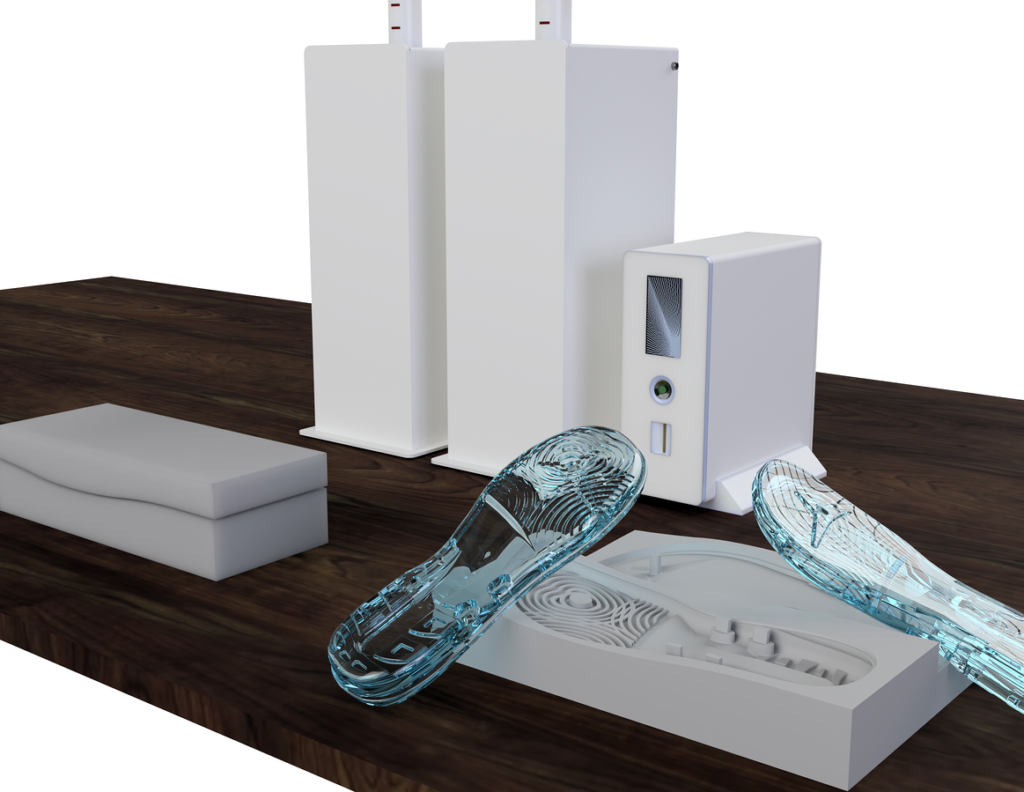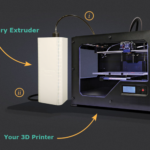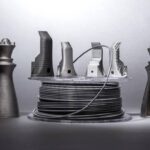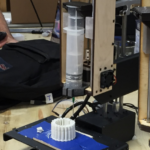

Ontario, Canada’s Structur3d is attempting to bring injection molding to the desktop with its newest product. The Inj3ctor Platform is low-cost method for injection molding rubber parts that may make an impact on prototyping and small batch production. A little over a year after the product was announced, the Inj3ctor is now available for purchase and has begun shipping.
Structur3d first came on the scene with its specialty tool head, the Discov3ry Paste Extruder, for desktop extrusion of silicone and other viscous materials in 2014. The company went onto release new product offerings and upgrades. This includes the Discov3ry Complete, which sees the paste extruder bundled with an Ultimaker 2+ 3D printer, and the Discov3ry 2-Part Complete, which can mix two materials together, such as silicone or an epoxy with an additive or binder, before extrusion.
The company has now moved on to incorporate injection molding into its product lineup. The Inj3ctor system first sees a mold 3D printed in either a standard or a dissolvable plastic. Once a liquid rubber material is chosen, the mixing ratio and injection volume for it are chosen before Inj3ctor fills in the mold, producing the final, flexible item.
“As a team of scientists and chemical engineers, we took a materials approach to 3D printing technology and expanded the printers’ material capabilities beyond standard plastics,” said Charles Mire, CEO and co-founder of Structur3d. “Our Inj3ctor platform spotlights our shift to industrial manufacturing markets and demonstrates how additive manufacturing can lead the way toward the factory of the future. The technology opens the door for product developers and manufacturers to accelerate research and prototyping while reducing risk in supply chain procurement and manufacturing.”

The platform seems to take Structur3d’s existing Discov3ry system and modify it so that, rather than 3D print rubber materials directly, they are pumped to a 3D-printed mold. In the video below, this is performed with a vice grip setup that clamps the 3D-printed mold together while the Discov3ry machine feeds the material into a tube that attaches to the mold.
When Structur3d first launched in 2014, the company demonstrated that it saw a gap in the 3D printing industry, particularly for desktop machines. As much potential as 3D printers had, they were not yet able to use all of the same materials available in the broader manufacturing industry.
While the original Discov3ry extruder was able to address some of those issues, there remained the larger problem of structural integrity in extruded parts; the Z-axis is weaker than in the X and Y. In order to get truly isotropic properties for rubber components, then, injection molding is the way to go. By creating a method for injection molding parts using 3D printed molds, Inj3ctor tackles this problem as well. Now, it’s possible to produce custom molded objects for batch production or prototyping.
Still, there may be further hurdles to overcome. The finish of a 3D printed mold may not be desirable for high-definition parts and, so, require some post-processing to achieve the necessary level of smoothness. Additionally, while this style of injection molding may be appropriate for rubber materials, it may not work for molding high temperature plastics.
Structur3d is not the only one in the market that believes 3D printing can act as a bridge for injection molding. Two other firms that come to mind are AddiFab and Collider, both of which use a stereolithography-style process to create disposable molds for injection molding. While AddiFab’s molds are put into an injection molding machine, Collider’s molds are dissolved during the 3D printing-molding process itself within a single machine.
As we’ve learned in 3D printing, there’s room for just about everybody in the space. Where AddiFab’s process may be suitable for one customer or application, Structur3d’s is surely suitable for another. Exactly who, what, when, where, why and how will become clearer as customers get Inj3ctor into their hands.
The first batch of Inj3ctor bundles are now shipping and interested parties can visit the Structur3d website to purchase. The bundle includes the Inj3ctor, as well as an Ultimaker S5 3D printer, accessories, customer support and materials for the printer and the injection molding system.
If you're looking to get architectural 3D animation in the USA, our service provides an exceptional way to bring your architectural concepts to life through dynamic, immersive visuals. Through our platform, you can easily request high-quality 3D animations that showcase your designs in motion, offering a detailed view of your project from multiple angles and perspectives. Whether it's for a real estate development, a commercial building, or an urban planning project, our expert team ensures that every detail is captured in a visually compelling animation.
Through our website, you can seamlessly get architectural 3D animation tailored to your project’s specific needs. With our help, you can offer potential clients or investors an engaging experience that goes beyond static images. By integrating CGI animations with real-world settings, lighting, and textures, our team creates a lifelike experience that allows your audience to interact with your project as though it were already built. This service is perfect for presenting complex designs in a clear, visually attractive way that stands out in the competitive architectural market.




